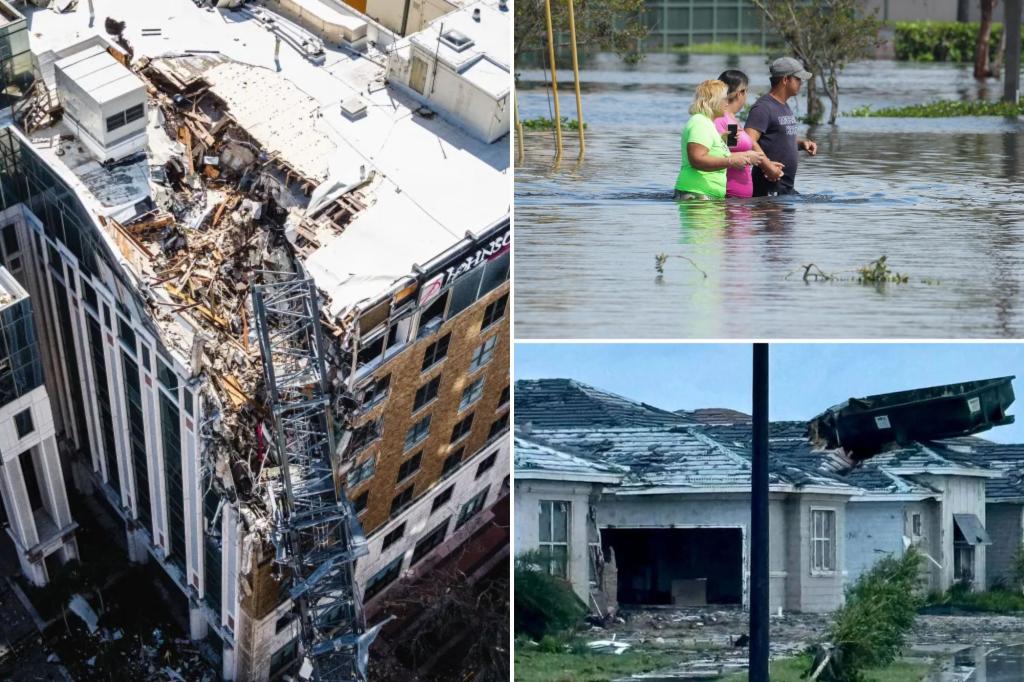Hurricane Milton caused widespread devastation across Florida, leaving over 4 million residents without electricity and resulting in at least 17 deaths in eight counties. The storm initially reached Category 5 intensity in the Gulf of Mexico before making landfall as a Category 3 near Sarasota. Evacuation orders were issued for 6 million residents, with concerns about a potential storm surge in the Tampa Bay area. However, the storm weakened and the surge was not as severe as feared, although 5-10 feet of water rise was reported in certain areas.
Despite the storm not reaching its worst-case scenario, Milton still caused significant damage and loss of life. Over a dozen deaths were attributed to the storm, with many resulting from a tornado outbreak that flattened mobile home parks. Around 1,000 people and 100 animals were rescued from debris and floodwaters in the aftermath of the storm. The storm also produced at least 50 tornadoes, including one that destroyed part of a senior community in St. Lucie County, leaving first responders searching for potential victims.
Utility crews have been working tirelessly to restore power to affected areas, with over a million customers already having power restored less than 24 hours after the storm made landfall. While progress has been made, nearly 3 million customers are still without power, with efforts underway to have most of them restored by the end of the week. Florida Governor Ron DeSantis noted that 50,000 linemen are working to restore power, particularly in the Tampa area which suffered significant damage.
The storm’s intense winds caused widespread damage, including tearing the roof off Tropicana Field in St. Petersburg and toppling a crane from a building under construction in the downtown area. National Weather Service offices indicated that some of the tornadoes spawned by Milton may have been significant, possibly receiving ratings greater than an EF-2 on the Enhanced Fujita Scale. The storm’s impact, combined with recent disasters, has strained FEMA’s resources, but the Department of Homeland Security is ensuring that adequate support will be provided to affected areas.
As recovery efforts continue in the aftermath of Hurricane Milton, FEMA and other agencies are preparing for any future disasters that may occur during the ongoing hurricane season. With no immediate threats on the horizon, recovery efforts can proceed uninterrupted in hard-hit communities across the Southeast. Milton’s intensity made it the fifth-strongest cyclone on record in the Atlantic Basin, underscoring the need for ongoing preparedness and response measures in the face of natural disasters.


